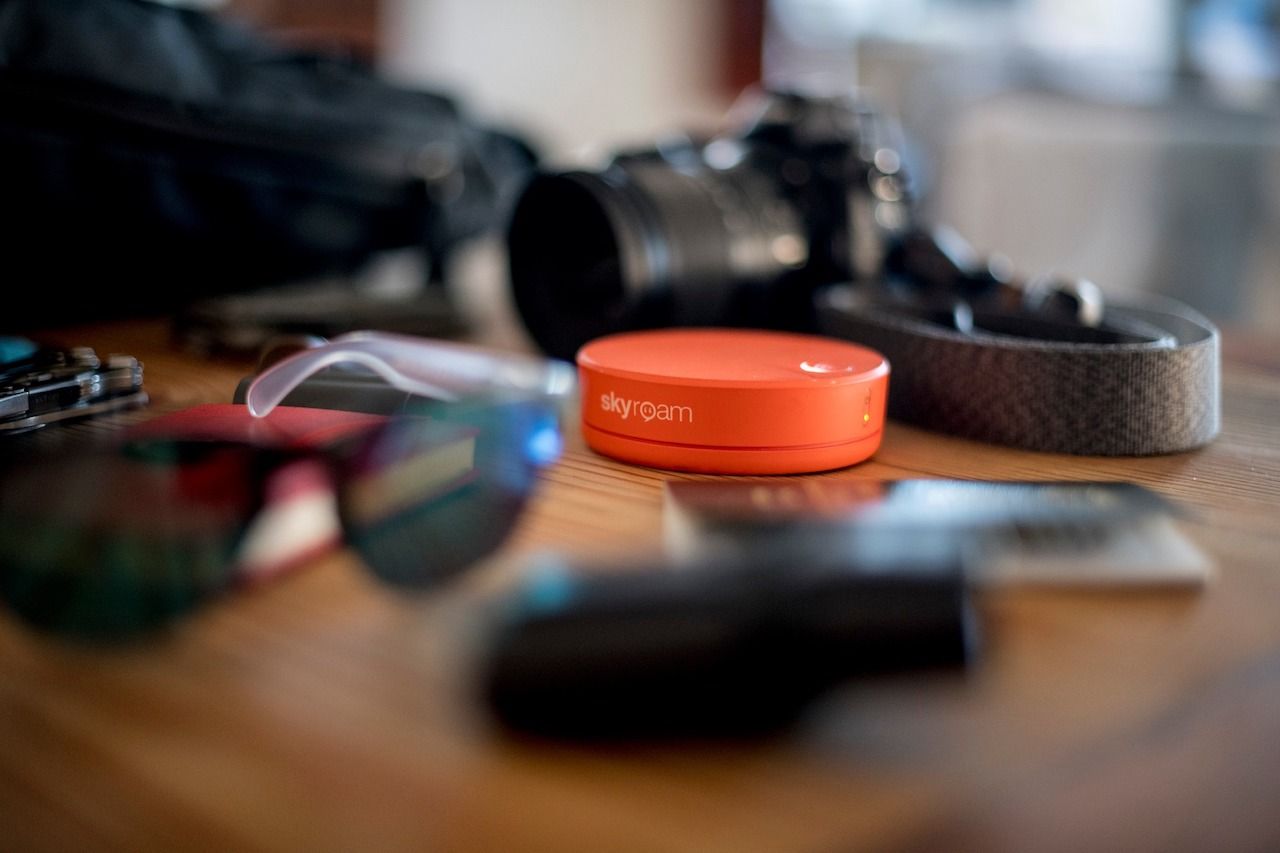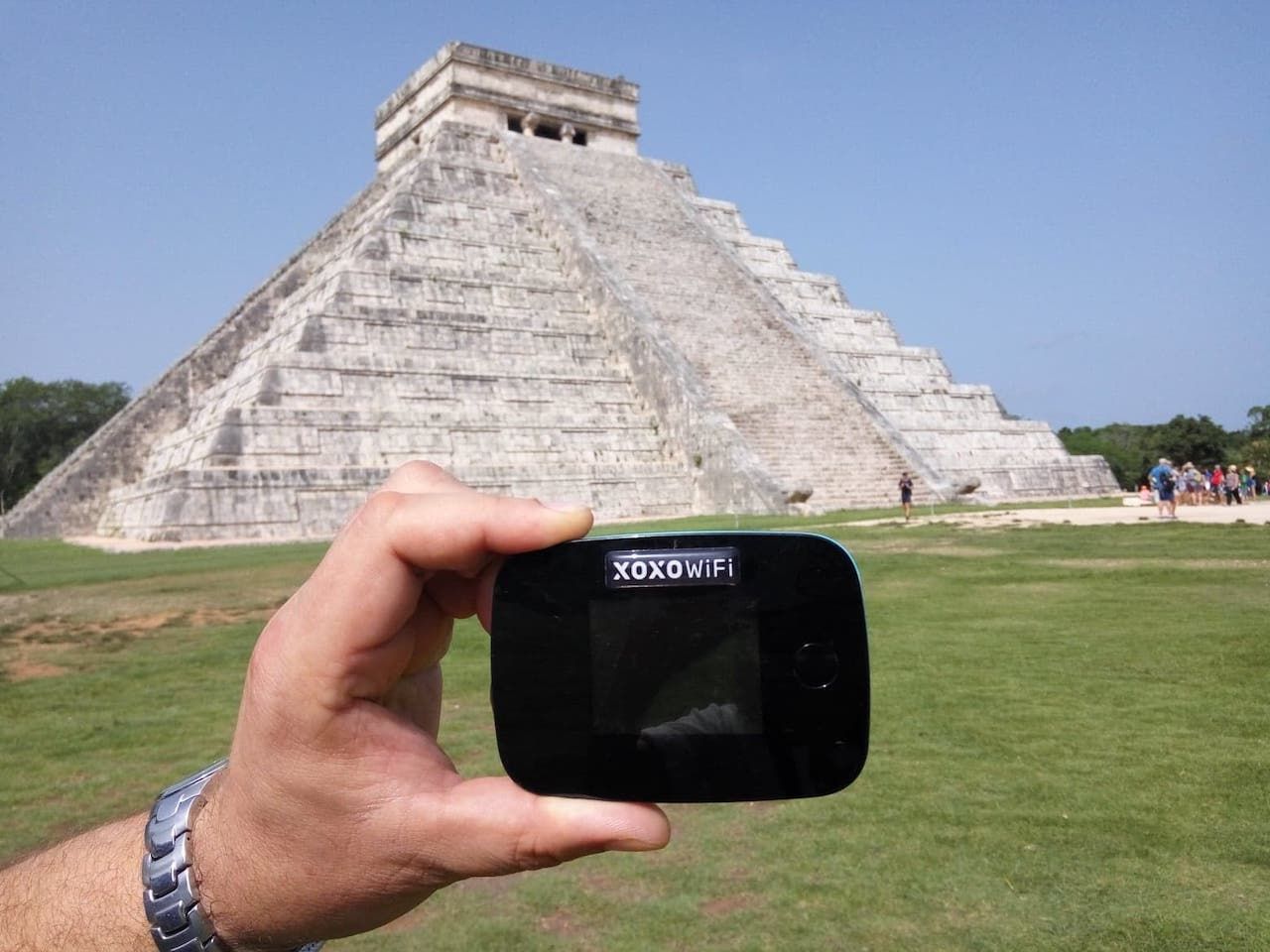As much as we don’t want to admit it, the internet is something we can’t live without, even when traveling — after all, that’s when it’s most important to keep in touch with people back home. Unfortunately, travelers face all types of hurdles in staying connected while on the move, international service fees and spotty motel Wi-Fi being just the start. Enter portable Wi-Fi devices, also sometimes called pocket Wi-Fi. By connecting to local data providers, these handy little mobile routers can be the most consistent sources of reliable Wi-Fi across much of the world, including in the United States. In order to help you keep Instagramming your best life, here is a comprehensive list of the top portable Wi-Fi devices based on your type of travel.


The Best Portable Wi-Fi Devices for International Travel
How to use a portable Wi-Fi device
The device will come with an app that allows you to manage your account, and typically to upgrade your service or purchase additional access. When you receive your device in the mail, follow its specific setup instructions, which typically include activating your purchased bundle or day pass of Wi-Fi by connecting the device to your account. Once your service is set up, portable Wi-Fi devices work similarly to a normal web router — you connect your device via the Wi-Fi tool on your computer, phone, tablet, and other devices.
Best Wi-Fi hotspot for long-term travelers: Skyroam

Photo: Skyroam/Facebook
Skyroam works in 130 countries globally and has the most consistently strong service in Southeast Asia, South Korea, and other Asian countries. It also holds the distinction of being the world’s first Wi-Fi hotspot to work on such a global scale, and its developers have had 11 years to work out kinks and make the service better. Its offering is versatile — there’s no more topping up when you go over your data limit for the day because it offers packages with unlimited data. You simply turn it on and it connects to the best available local signal whether you’re in the countryside or city. The device can support up to 10 gadgets at once without a hitch.
Why it’s the best for long-term travel
Once you buy your device and plan, you’re set. No worries on where you’re going or for how long — you own the device so no need to return it. Bali to Budapest to Boston? No problem.
The cost
Skyroam’s device itself costs $179.99 to buy. Wi-Fi cost depends on how heavily you use the web while on the road. Here’s the basic rundown of the prices:
- Option one: $9/day for 24 hours of unlimited Wi-Fi. This option is ideal for those who don’t necessarily need data-driven Wi-Fi every day, and is the best option to ensure you use everything you pay for.
- Option two: $9/month for 1 GB of data. This is for the people who like to use their phone for a quick Google search or to translate something. Not too much data, certainly not enough for more than one person.
- Option three: $99/month for all-you-can-eat data, with unlimited global connectivity anytime, anywhere. For those who regularly stream music and work on your laptop, this is your plan.
Best portable Wi-Fi for cruise ships: Tep Wireless

Photo: Tep Wireless/Facebook
Tep Wireless devices are built for specific regions, and look much like a cellphone, fitting nice and snug inside of your pocket, something Skyroam still hasn’t managed to pull off. Tep Wireless is slightly more expensive, but its package is more complete. Every Tep device order comes with all of the gadgets you need, including a travel pouch, adapter, charging cable, kite string, user guides, an app, and 24-hour support. Its website promises “unlimited internet” but there’s, of course, a caveat — the unlimited internet never cuts off no matter how much you use it, but once you’ve consumed the daily allotment of data from your plan, the connection speed maxes out at 256 kbps.
Why it’s the best for cruise ships
Tep Wireless, or Teppy as it has been nicknamed, addresses the conundrum of open-sea Wi-Fi on its website. It’s upfront about the fact that that it won’t work in the middle of the ocean — none of these devices will — but it specifically guarantees that it will work closer to shore and while docked.
The cost
This one is a tad more expensive than Skyroam for service, but offers different speed options (and colors, just in case bright orange isn’t your thing). Rent the device for your cruise instead of buying it and send it back after your return, avoiding paying an upfront cost for something you only need for this trip.
- Option one: $8.95/day for 1 GB at 3G speeds, which resets each day that you pay for.
- Option two: $10.95 per day gets you 1 GB at 4G speeds to use each day that you connect.
- Option three: $12.95 a day gets you 3 GB per day at 4G speeds.
Best Wi-Fi hotspot for shorter trips (1-2 weeks) with set itineraries: XOXO WiFi

Photo: XOXO WiFi/Facebook
XOXO WiFi is ideal for shorter trips, particularly in Europe. XOXO specifies very clearly on its website what the service will be like in the place(s) you’re traveling to, and whether or not that service is going to cost you extra. So if you plan to fly into Paris and then train it to Switzerland, Germany, and the Netherlands, you can confirm that the service will work throughout and that you’ll even have service on the train rides. The best part is that you don’t need a contract, only a rental form.
Why it’s the best for shorter trips
XOXO WiFi rents the device to you, like Tep, saving you the cost of buying and making it ideal for short trips by infrequent international travelers.
The cost
XOXO WiFi allows you to choose a package based on either daily connectivity or bulk coverage that you can buy in advance.
- Option one: Choose the basic coverage of $11.50 a day with no 4G speeds but unlimited internet, the best option for the casual browser.
- Option two: Grab a 14-day pack for $161 with 4G speeds and connect up to five mobile devices to share the hotspot, an ideal option for families.
Best Wi-Fi hotspot for road-trippers, climbers, and outdoor adventurers: My Webspot

Photo: My Webspot/Facebook
My Webspot bails on the daily internet caps imposed by some other providers, though it does cap your speed after 1 GB. What really separates it from the herd, though, is that it offers prepaid packs of Wi-Fi, as opposed to charging per day as you go. For example — for $299, you get the pocket Wi-Fi device shipped to you and a card preloaded with 20 days of Wi-Fi access. The service is shareable with up to five devices and the hotspot itself has an eight-hour battery life. The website isn’t the most advanced, but through experience, the service is as dependable as Tep Wireless and Skyroam, and is particularly strong in Australia, more so than the others. Its cell phone-esque device looks just like the one from Tep Wireless.
What makes it the best for outdoor adventurers
Whether or not its design was intentionally built for #vanlifers and others who alternate between offline days on the road or in the backcountry and days on a laptop, that’s exactly how My Webspot has evolved. If you know you’re going to be out in the wilderness for eight days of a three-week trip, its pass plans make it easy to plan ahead and buy enough Wi-Fi in advance so that you avoid coming home to a bill that’s larger than anticipated.
The cost
In the grand tradition of portable Wi-Fi devices, My Webspot has three primary price points:
- Option one: For $228 you’ll get a 20-day pass pack that is available for six months (not including the device — with a device, the charge is $299). It gives you a card that you can recharge anytime you like and you’re able to use this in over 100 countries.
- Option two: $564 gets you a 50-day pack available for eight months, with unlimited data and a three-free day pass.
- Option three: Pay $1,128 and receive a 100-day pack available for eight months, similar to the above but with more days.